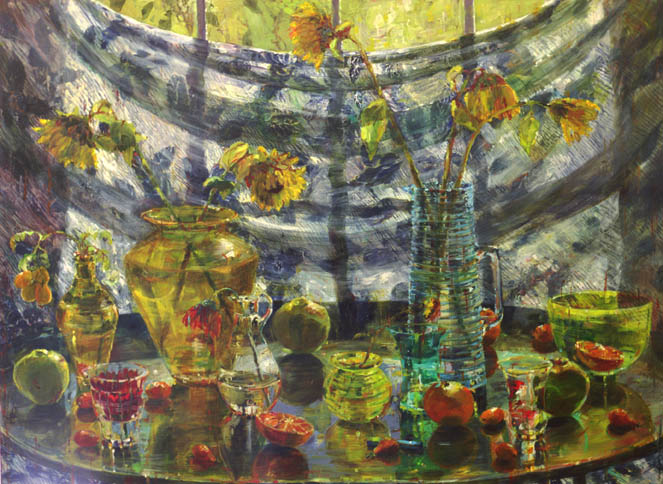“Clementines and Shibori Silk” shows small mandarin oranges and a container of white blossoms sitting on a sheet of dyed fabric. Pasty highlights and mauve shadows applied to the fruit and container create the impression of stark sunlight.
Among the strongest pieces are the works depicting window treatments, which the artist used to achieve specific lighting.
“Light in the Studio” features drapery that softens sunlight shining through divided windowpanes. The drapery also acts as a neutral backdrop for red, orange and yellow flowers in pitchers.
“Cottage Painting With Lure” pictures a bamboo shade that lets the yellowish light of late afternoon seep in. The horizontal lines of the shade also counterbalance the vertical lines of objects on a table.
Stewart sometimes gives a nod to painters of the past by painting their works into her works. Although this approach may be amusing, where Stewart’s oeuvre is concerned, it seems like a fleeting detour rather than an avenue for serious exploration.
“Still Life With Matisse” presents Stewart’s depiction of “The Red Studio,” a Matisse painting she saw at the Museum of Modern Art in New York. In Stewart’s crowded oil on canvas, the Matisse is tucked behind pitchers and vases gathered on a red tabletop.
“Still Life With Diebenkorn” seamlessly incorporates an illustration of an early landscape by Richard Diebenkorn into an arrangement of astonishingly reflective and transparent vessels. A silver goblet, a tin can and some jars appear to share space with Bay Area scenery.
Stewart has said, “I always paint from life.” However, this exhibit includes a few paintings based on a series of photographs she took in San Francisco. These colorful new works, focused solely on hanging Chinese lanterns, stand in stark contrast with the rest of the show.
Rather than suggesting a single, natural light source, they suggest numerous, artificial light sources. In “Chinese Lanterns I,” a profusion of illuminated lanterns leaves precious little room for interplay between light and dark.
Spatial depth is rendered shallow. Colors flatten out on the surface of the paper more than they model objects in the round.
Stewart also has said, “I search for the place in painting that exists between the representational and the abstract.”
The lantern paintings tip the scale in favor of the latter.
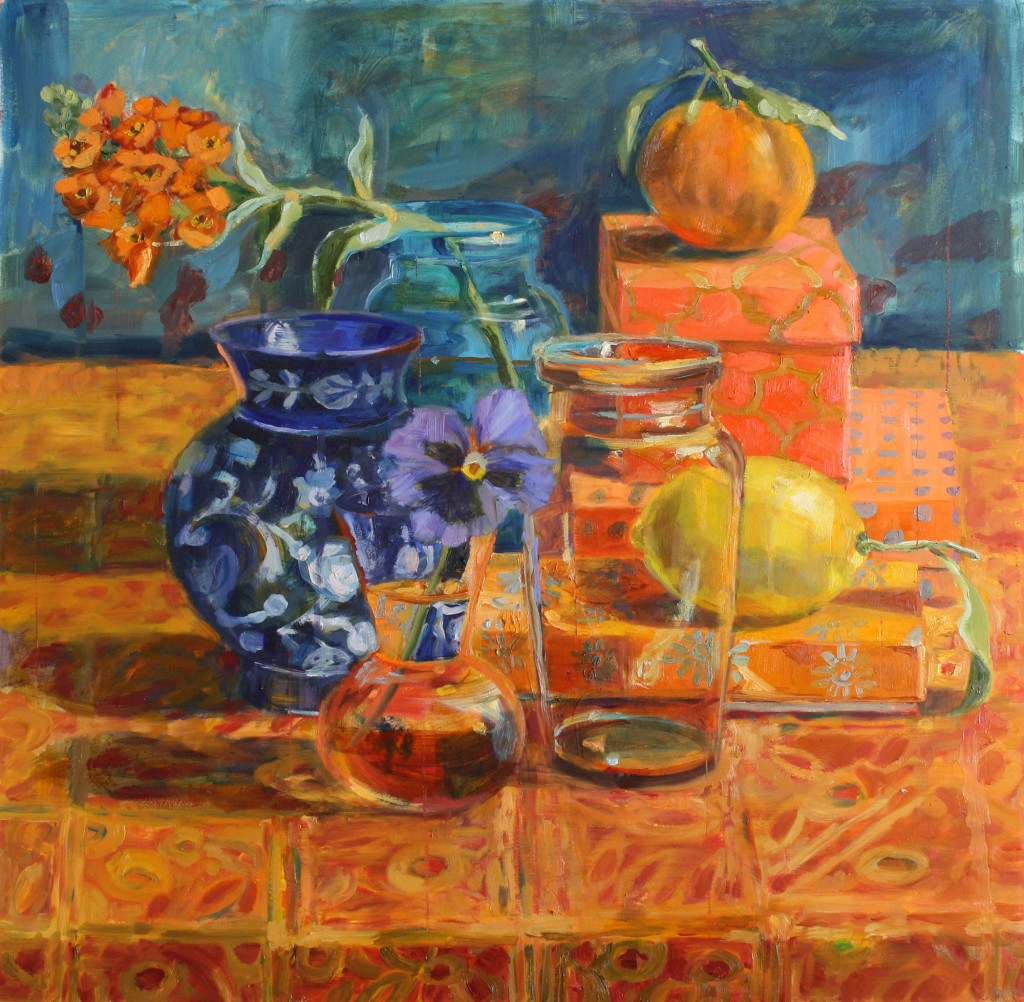 by Lisa Aurand
by Lisa Aurand
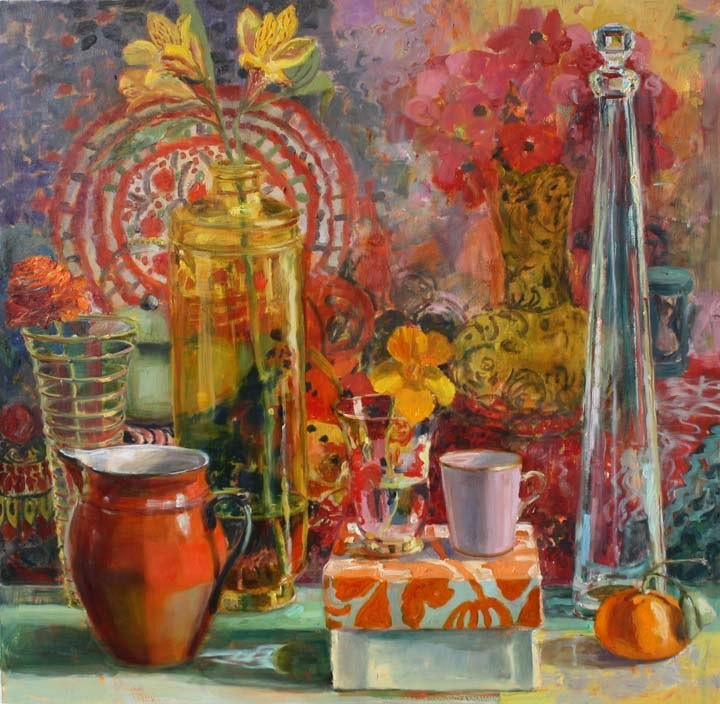 by Dana Self
by Dana Self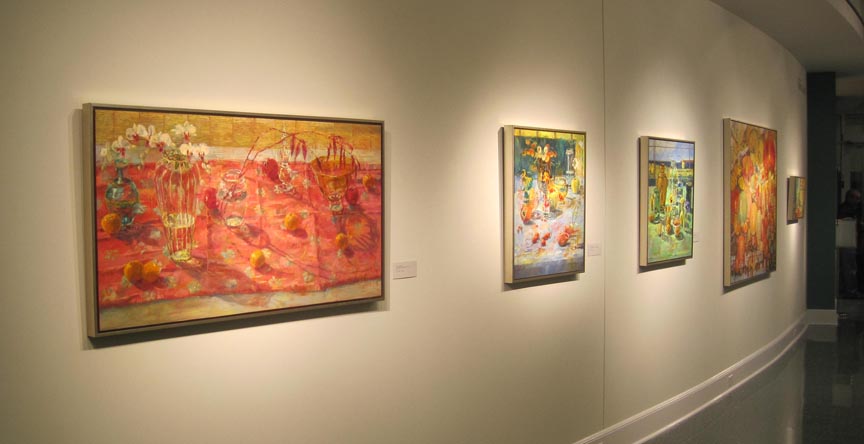
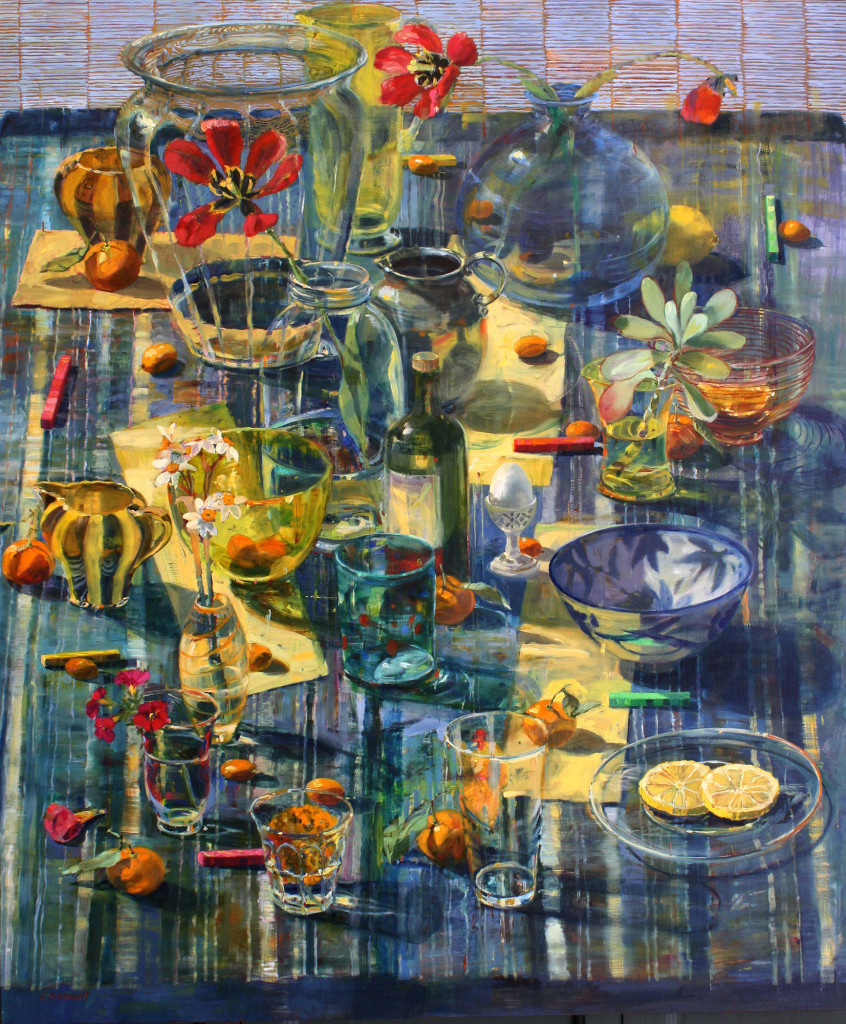 by Steven Litt, The Plain Dealer
by Steven Litt, The Plain Dealer
